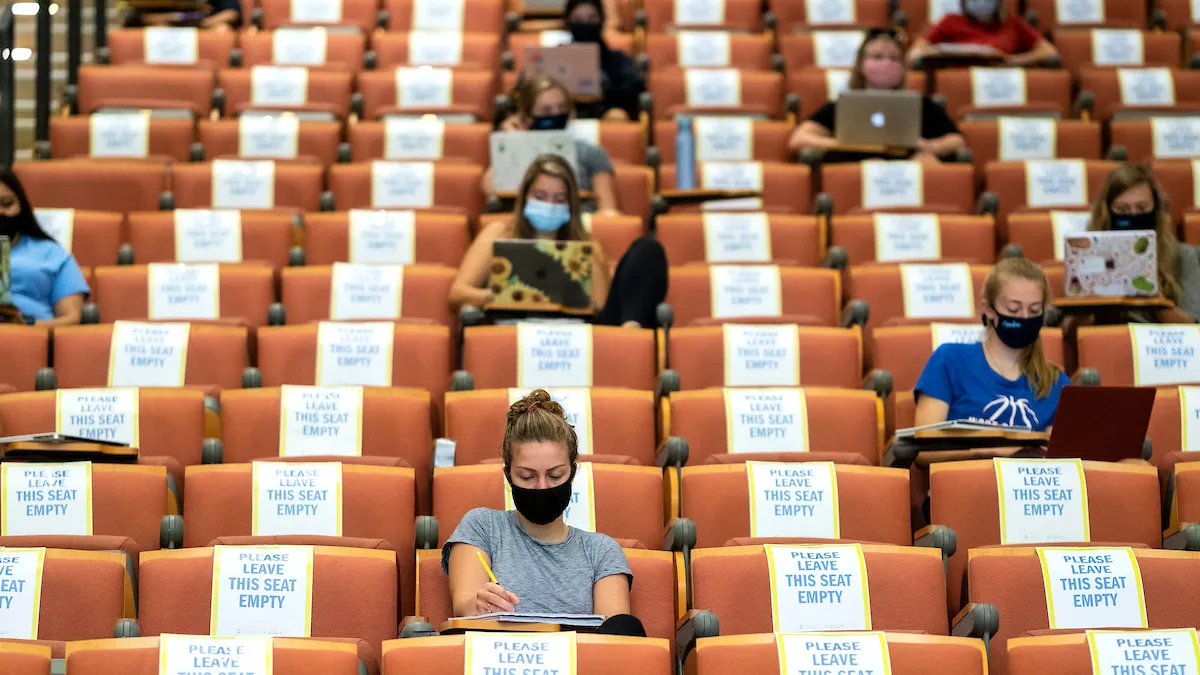Dive Brief:
-
Coronavirus outbreaks at the University of Michigan last year largely remained confined to campus, with little crossover into the surrounding area, according to a new study.
-
The report, a preprint which has not been peer reviewed, revealed "remarkably little spread into the community" from the U of Michigan's main campus in Ann Arbor. Researchers from U of Michigan and University of Wisconsin-Madison analyzed the genetics and coronavirus test results of more than 1,650 individuals in Washtenaw County, where the university is located, to arrive at this conclusion.
-
The study stresses, however, the way the virus's spread "could have played out differently" if the university was dealing with a more transmissible strain last year. The delta variant, considered to be far more infectious, currently comprises the bulk of new coronavirus cases in the U.S.
Dive Insight:
It's essential to understand the dynamics of the virus's spread at a college and whether it extends into the nearby communities, the study says. Doing so can lead to better prevention strategies.
Reports have linked campus reopenings last year to spikes in coronavirus case counts. And in one study of 30 institutions, more than half saw a peak in new infections in their home counties within two weeks of a campus outbreak.
The new study points to research indicating areas with large colleges that held in-person instruction had higher COVID-19 infection rates compared to those where institutions were remote only. But this might simply reflect transmission among students, and not spread into the community, the study states.
To test their theories, researchers examined the genomes of 1,659 people in Washtenaw County, including 468 U of Michigan students who had contracted the coronavirus. This accounted for about a fifth of the confirmed cases during the fall semester among students. It represents roughly a quarter of the total confirmed cases per week in the county.
Researchers found two major campus outbreaks that occurred in the fall but little evidence to suggest they significantly contributed to increases in community cases. The researchers wrote that "it is unlikely that large outbreaks among students were the source of most COVID-19 infections in the community." But, they noted, larger outbreak clusters resulted in more community spread than smaller ones.
A. David Paltiel, a public health professor at Yale University, said in an email he was pleased researchers started questioning transmission dynamics between campuses and their communities.
Genomic surveillance like they conducted isn't his expertise, he said. But Paltiel liked the idea of trying to determine whether infections at colleges caused wider outbreaks instead of only asking whether institutional and community outbreaks were associated with each other.
"It is entirely possible that the causal relationship went one way in some settings and the other way in other settings," Paltiel said. "Some universities may have amplified community transmission with their poor intake control, their inattention to silent spread, and their cavalier attitude to their surrounding community."
While the study's results may be useful to colleges as they map out their fall plans, more virulent strains and lagging vaccine uptake are complicating matters. The Centers for Disease Control and Prevention revised its recommendations Tuesday, saying even fully vaccinated individuals in parts of the country with substantial transmission rates should wear masks in public settings amid the rise of the delta variant.











